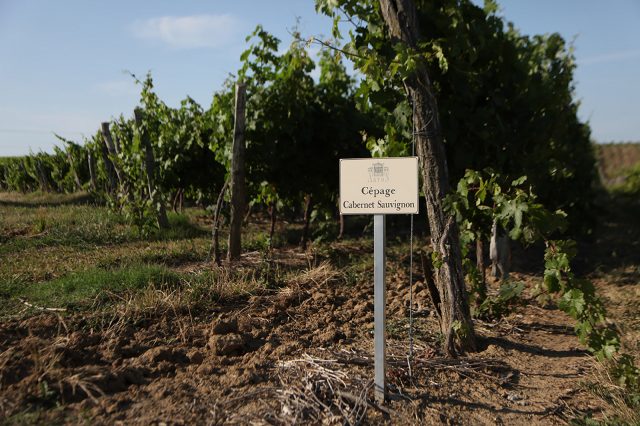Côtes de Gascogne IGP
Designation IGP Côtes de Gascogne
For a long time the Côtes de Gascogne wines were declared “Vin de Pays”, or local wine. Since 2009, they are IGP, “Indication Géographique Protégée”, or geographically protected, a designation that covers the same territory and the same terroir as the Armagnac. It is a region that includes the departments of Gers, the eastern part of Landes and the south of Lot-et-Garonne.
Known for its eau de vie, the Armagnac region is still largely overlooked for its wines. However, two-thirds of vineyards here are today dedicated to the production of tasting wines (12,000 hectares). Its atypical production model – 85% white, 8% rosé and 7% red wines – are linked to the Armagnac tradition, a brandy produced from the distillation of regional white wines.

Terrroir
The Armagnac region has a temperate climate that favors the production of expressive wines. The humidity from the ocean, the Mediterannean warmth that is carried by the eastern winds and the continental influences create mild, wet winters and hot, often stormy, summers, where the wide differences between day and night temperatures benefit the aromatic potential of the grape.

The diversity of the soils in the region marks the plurality of the Côtes de Gascogne wines.
In the West, the light soils of Bas Armagnac, called “tawny sands” (clay-sandy soils), produce an expressive white wine known for its fruity aromas. Less favorable to red wines, they however bring with them a certain aromatic freshness.
In the center of the region, the Ténarèze soil, predominantly clay and limestone (terrefort), give more tannic, fatty and very aromatic wines. It bolsters the development of robust red wines after aging.

In the East, the clay-limestone soil of the Haut Armagnac, composed of gravel and peyrusquets (shallow layers of rocky limestone), is favorable to the growing of red wine, and produces fine and balanced whites. In this vast territory, the vines, the least planted of the three, have remained little-known. Ravaged by the phylloxera epidemic at the end of the 19th century, the vineyard was replanted little by little. Patrick de Montal, owner/operator of Domaine d’Arton, was the first person to reintroduce the vines to the Lectoure plateau in 1981.
Grape Varieties
The designation of Côtes de Gascogne comprises around forty authorized grape varieties, including the heritage varieties of Gascony ( Colombard, Ungi Blanc), as well as varieties coming from elsewhere (Manseng, Sauvignon, Merlot, Syrah, Cabernet…).
Domaine d’Arton is an 88 hectare vineyard, planted with 8 grape varieties (Ugni Blanc, Colombard, Gros Manseng, Petit Manseng, Sauvignon, Syrah, Merlot and Cabernet).
This diversity is a daring choice which marks the singularity of our wines. Subtly blended, these different varieties give a unique character to the finished product. It is the signature of Arton and the insurance, year after year, of a distinguishable consistency in taste.

The Colombard is a historical regional variety that we can also find in the production of Armagnac. It creates an acidic, intensely aromatic white wine with notes of citrus and exotic fruits.
The Sauvignon, introduced in the region thirty years ago, adds a particular complexity to the blend.
The Mansengs, grapes with a thick skin that are resistant to the hot summers of the Southwest, carrying a roundness and suppleness to the dry white wine. Harvested late, they make excellent aperitif and dessert wines.
Merlot brings notes of red berries to the blend, while Cabernet-Sauvignon bestows a fragrance of currants and grilled bread. Syrah on the other hand, exudes aromas of raspberries, spices and pepper which enchant the Arton rosés.
The Arton Signature
The wines of Domaine d’Arton carry a certain ambition: to explore the oenological potential of the Haut Armagnac region in order to put the Côtes de Gascogne wines on the map.
Our land enjoys an exceptional terroir. The geological richness of the Haut Armagnac region, conducive to the production of both white and red wines, permits us to reconcile the regionale winemaking tradition with a creative spirit and an inventive approach. To preserve the local mastery of Gascony whites and the unique expressions of the Gascony reds while still innovating, we have freed ourselves from a too-literal reading of the principles of Gascon winemaking. We reinvent it accordingly, marrying a region, Gascony, with the singular vision of Arton.
The uniqueness of Arton wines redefine the taste territory of the Côtes de Gascogne and mark the Haut Armagnac as a land of innovation.
